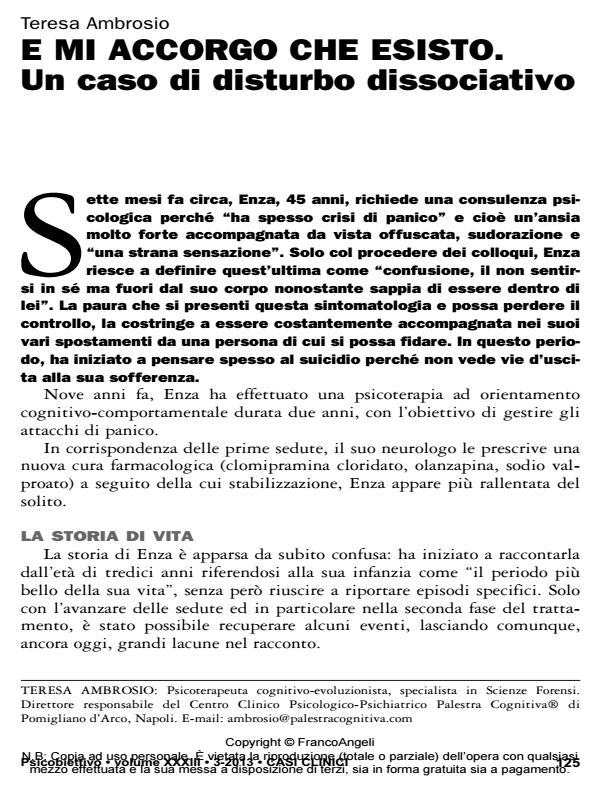So i feel i exist. A case of dissociative disorder
Journal title PSICOBIETTIVO
Author/s Teresa Ambrosio
Publishing Year 2014 Issue 2013/3
Language Italian Pages 11 P. 125-135 File size 315 KB
DOI 10.3280/PSOB2013-003007
DOI is like a bar code for intellectual property: to have more infomation
click here
Below, you can see the article first page
If you want to buy this article in PDF format, you can do it, following the instructions to buy download credits

FrancoAngeli is member of Publishers International Linking Association, Inc (PILA), a not-for-profit association which run the CrossRef service enabling links to and from online scholarly content.
The author illustrates the clinic case of Enza, a patient with a Dissociative Disorder. In the first part, the case is based on her life story, on the disorder description, on the reasons of the decompensation, on the mechanisms of maintenance and on the patient’s vulnerability. In the second part, the cognitive-evolutionary psychotherapic treatment as yet effected is described in its specific phases. Later, the problematic moment and the difficulties of the case are described.
Keywords: Dissociation; Depersonalization; Identity; Complex Post-Traumatic Stress Disorder; Trauma.
Teresa Ambrosio, E mi accorgo che esisto. Un caso di disturbo dissociativo in "PSICOBIETTIVO" 3/2013, pp 125-135, DOI: 10.3280/PSOB2013-003007